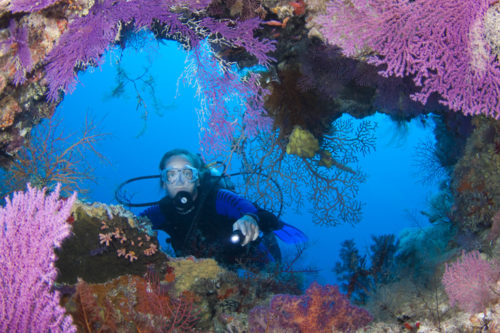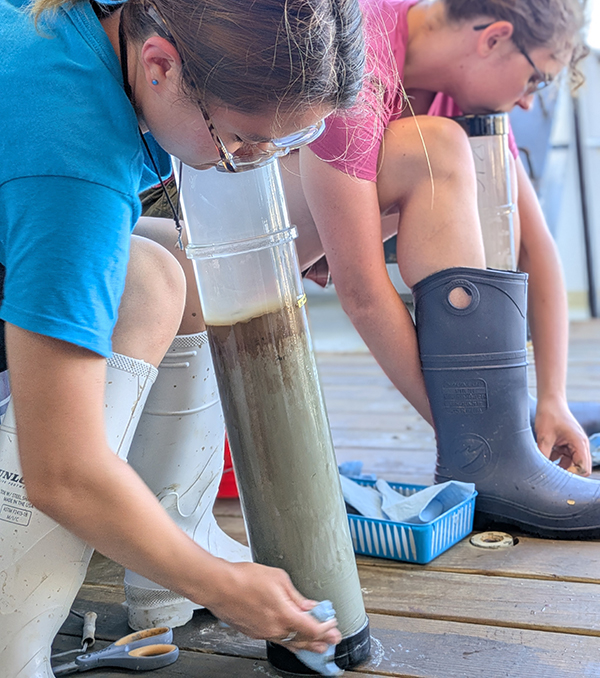Can you un-bleach coral? BBC visits remote reef to find out – BBC

Report on Mass Coral Bleaching at Ningaloo Reef and its Implications for Sustainable Development Goals
1.0 Introduction
A significant environmental incident has been recorded at the Ningaloo Reef, a UNESCO World Heritage site in Western Australia. Widespread mass coral bleaching has occurred as a direct result of what scientific analysis identifies as a “marine heatwave.” This event poses a direct threat to the ecological integrity of the reef and undermines progress toward several key United Nations Sustainable Development Goals (SDGs). This report outlines the critical impacts of this event in the context of the 2030 Agenda for Sustainable Development.
2.0 Ecological Impact and Relation to SDG 14: Life Below Water
The mass bleaching at Ningaloo Reef represents a critical challenge to the targets of SDG 14 (Life Below Water). The primary function of this goal is to conserve and sustainably use the oceans, seas, and marine resources. The degradation of the reef has severe consequences:
- Loss of Biodiversity: The article notes that the coral “harbours a massive amount of biodiversity.” The bleaching event directly threatens this ecosystem, jeopardizing countless marine species that depend on the reef for food and shelter. This contravenes SDG Target 14.2, which focuses on protecting and restoring marine and coastal ecosystems.
- Ecosystem Health: The health of the coral is fundamental to the vitality of the surrounding marine environment. Its decline signals a failure to manage and protect these vital resources from the adverse impacts of climate change.
3.0 Root Causes and Connection to SDG 13: Climate Action
The identified cause of the bleaching, a “marine heatwave,” is a direct manifestation of global climate change. This underscores the urgent need for global cooperation on SDG 13 (Climate Action).
- Climate Change Impacts: The incident serves as a clear indicator of the tangible and destructive impacts of rising global temperatures on vulnerable natural systems.
- Urgency for Mitigation: Reversing the damage and preventing future occurrences is intrinsically linked to the successful implementation of SDG 13, which calls for urgent action to combat climate change and its impacts. Without significant progress on this goal, efforts to protect marine life under SDG 14 will be insufficient.
4.0 Broader Socio-Economic and Environmental Consequences
The degradation of Ningaloo Reef extends beyond immediate ecological damage, affecting other critical development goals.
- SDG 11 (Sustainable Cities and Communities): The report highlights that coral reefs “protect shores from extreme weather.” The loss of this natural barrier increases the vulnerability of coastal communities to storms, erosion, and sea-level rise, undermining SDG Target 11.5, which aims to reduce the adverse effects of natural disasters.
- SDG 8 (Decent Work and Economic Growth): As a UNESCO World Heritage site, Ningaloo Reef supports local and national economies through tourism, recreation, and fisheries. The degradation of this natural asset threatens livelihoods and sustainable economic activities dependent on its health.
5.0 Conclusion: The Imperative for Integrated Action
The mass bleaching at Ningaloo Reef is a critical environmental crisis that illustrates the interconnectedness of the Sustainable Development Goals. Addressing the question of whether the damage can be undone requires a multi-faceted approach centered on the 2030 Agenda. An effective response necessitates:
- Immediate and robust global action on SDG 13 (Climate Action) to mitigate the root cause of marine heatwaves.
- Targeted conservation and restoration efforts to support the resilience of the reef, in line with SDG 14 (Life Below Water).
- Recognition of the reef’s role in protecting communities and supporting economies, reinforcing the importance of SDG 11 and SDG 8.
Saving vital ecosystems like the Ningaloo Reef is not merely an environmental issue but a fundamental component of achieving a sustainable and resilient future for all.
Analysis of SDGs, Targets, and Indicators
1. Which SDGs are addressed or connected to the issues highlighted in the article?
- SDG 14: Life Below Water – This is the most directly relevant goal, as the article focuses on a marine ecosystem (Ningaloo reef), the threat of coral bleaching, and the biodiversity it supports.
- SDG 13: Climate Action – The article attributes the coral bleaching to a “marine heatwave,” which is a direct consequence of climate change, linking the issue to the need for climate action.
- SDG 15: Life on Land – Although the ecosystem is marine, this goal is relevant because of its focus on biodiversity. The article explicitly states that “The coral harbours a massive amount of biodiversity,” and the bleaching represents a degradation of a natural habitat leading to biodiversity loss.
- SDG 11: Sustainable Cities and Communities – A connection can be made through the ecosystem services mentioned. The article notes that the reef “protects shores from extreme weather.” The degradation of this natural barrier increases the vulnerability of coastal communities to climate-related disasters.
2. What specific targets under those SDGs can be identified based on the article’s content?
- Target 14.2: By 2020, sustainably manage and protect marine and coastal ecosystems to avoid significant adverse impacts, including by strengthening their resilience, and take action for their restoration in order to achieve healthy and productive oceans.
- Explanation: The article discusses the “mass bleaching” of the Ningaloo reef, which is a significant adverse impact. The question posed, “can anything be done to save it?” and “whether the damage can be undone,” directly relates to the need for protection, management, and restoration of this marine ecosystem.
- Target 14.5: By 2020, conserve at least 10 per cent of coastal and marine areas, consistent with national and international law and based on the best available scientific information.
- Explanation: The article identifies the Ningaloo reef as a “UNESCO World Heritage area,” which is a designated marine protected area, directly aligning with the conservation efforts described in this target.
- Target 13.1: Strengthen resilience and adaptive capacity to climate-related hazards and natural disasters in all countries.
- Explanation: The “marine heatwave” is a climate-related hazard. The bleaching of the reef demonstrates a lack of resilience to this hazard. The article’s question about saving the reef points to the need to strengthen its resilience and adaptive capacity.
- Target 15.5: Take urgent and significant action to reduce the degradation of natural habitats, halt the loss of biodiversity and, by 2020, protect and prevent the extinction of threatened species.
- Explanation: The “mass bleaching” is a clear example of the degradation of a natural habitat. As the article states the reef “harbours a massive amount of biodiversity,” its degradation directly threatens this biodiversity, connecting to the core objective of this target.
3. Are there any indicators mentioned or implied in the article that can be used to measure progress towards the identified targets?
- Implied Indicator: Extent of coral bleaching. The article’s mention of “mass bleaching” serves as a qualitative indicator of the health of the marine ecosystem (Target 14.2) and the degradation of a natural habitat (Target 15.5).
- Indicator 14.5.1: Coverage of protected areas in relation to marine areas. The article explicitly identifies the location as a “UNESCO World Heritage area,” which is a specific, measurable type of marine protected area that contributes to this indicator.
- Implied Indicator: Occurrence and intensity of marine heatwaves. The article identifies a “marine heatwave” as the cause of the bleaching. Tracking the frequency and severity of such events is an implied indicator for measuring climate-related hazards (Target 13.1).
- Implied Indicator: State of biodiversity. The reference to the “massive amount of biodiversity” that the coral harbours implies that the health and diversity of species within the reef is a key measure of the ecosystem’s condition (Target 15.5).
Summary Table
4. Create a table with three columns titled ‘SDGs, Targets and Indicators’ to present the findings from analyzing the article.
| SDGs | Targets | Indicators (Mentioned or Implied) |
|---|---|---|
| SDG 14: Life Below Water | 14.2: Sustainably manage and protect marine and coastal ecosystems. | Implied: Extent of coral bleaching (“mass bleaching”). |
| SDG 14: Life Below Water | 14.5: Conserve coastal and marine areas. | 14.5.1: Coverage of protected areas (Mentioned: “UNESCO World Heritage area”). |
| SDG 13: Climate Action | 13.1: Strengthen resilience and adaptive capacity to climate-related hazards. | Implied: Occurrence and intensity of “marine heatwave”. |
| SDG 15: Life on Land | 15.5: Reduce the degradation of natural habitats and halt biodiversity loss. | Implied: State of biodiversity (“massive amount of biodiversity”). |
Source: bbc.com

What is Your Reaction?
 Like
0
Like
0
 Dislike
0
Dislike
0
 Love
0
Love
0
 Funny
0
Funny
0
 Angry
0
Angry
0
 Sad
0
Sad
0
 Wow
0
Wow
0











































































